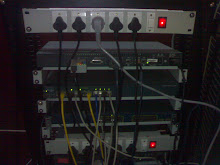CCNA Basics (Day 1)
Please read Our official Blogs for similar information.
Networx Technologies official Blogs :
http://
http://
http://ccnachd.blogspot.in/
http://
------------------------------
One of the challenges in learning the Cisco CCNA is learning how to
navigate the massive amounts of jargon or lingo that is involved. Like the word, services, which can also be worded as applications, or programs, this can also be called processes if it is behind the
scenes using Windows, and if it is the world of Linux we would call that a daemon. Now the test writers when they make up their multiple choice
tests have to make it hard somehow, so you get the picture.
we start with a discussion of network communication basics
and we create the analogy to regular verbal communication where there is
speaking and listening. Computer networking is the same there is a sender (the
source) and a receiver (the destination) over the medium or media.
The media is name give to the copper wire, the fiber optic cable, or the radio
waves if it is wireless. The sender and the receiver and the media make a
channel for communication. The message or data is what travels over that
channel. The message is divided into smaller pieces or segments. Commonly
we refer to these as packets. Later in the curriculum the word 'packet'
will receive a more specific meaning as a single part of the overall data
segment. Phew!
Multiplexing is when different types of data can travel over the wire
at the same time by interleaving the individual packets. This is multiple
conversations going over the channel.
We can also distinguish between end devices on a network like a
computer, an ip-phone, or a network printer and intermediary devices that
connect the end devices. Like a switch, hub, router, firewall or wireless access
point. On a network end devices are also called hosts or clients.
Another type of host is a server. A server is a host that is running
server software or server programs. This means that a server is listening for
requests on specific ports and is able to respond or serve data when a
request comes in. A computer can be a client a server or both at the same time.
In class the question was asked, “What is the difference between a router and
a switch?” A router interconnects and routes users to different networks and a
switch connects users to a single network or lan (unless it is configured with vlans).
A LAN or local area network is a network that spans a specific area
like a business, or a school. A lan is usually controlled and maintained by a
single organization. The college where we have class is an example of a lan. At
the college there are a lot of separate networks or subnets, many switches and
routers but the entire college is in one location and under one administration
so it is an example of a lan. Simply speaking if you have a bunch of computers
and you network them together by connecting them to a switch and give them a
common addressing or network protocol scheme then you have a lan. This could
also be called an intranet or interior network in that it is interior to
that organization only.
A WAN or wide are network is a network that connects lans across wide
geographical distances. It is also the network that is formed between you and
your lan and your ISP or internet service provider. If you have a Linksys
wireless router at home or another brand you may notice that the physical ports
on the back of the router are sometimes labelled LAN ports and WAN port. The lan
ports connect to your home devices like computers and a network printer and the
wan port connects to your modem or your ISP. In layman's terms the wan port is
what connects you to the internet.

No comments:
Post a Comment